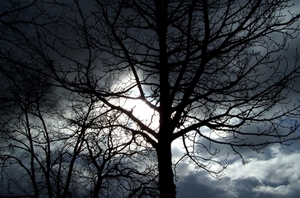In any car accident case, an experienced injury lawyer must carefully review the facts and identify all possible defendants.

These will include not only the alleged at-fault driver and his insurance company, but also:
–The owner of the vehicle (if different from the driver) and his insurer;
–The bar or establishment that sold alcohol to an underage, at-fault drunk driver;
–The manufacturer of the vehicle or vehicle equipment (if a defect was a factor);
–Other passengers in the car of the at-fault driver (if they encouraged or helped carry out reckless operation of the vehicle);
–The employer of the at-fault driver (if he or she was working at the time of the crash);
–The city, county or state responsible for unsafe roads.
These are just a few examples, and it depends heavily on the underlying situation.
In the recent case of Cordova v. City of Los Angeles, the California Supreme Court remanded a case back to trial court, finding plaintiff may have grounds to sue the city after the negligent driving of a third party resulted in several death on city roads in Los Angeles.
The passengers died after striking a magnolia tree located in a center median owned and maintained by the city. Plaintiffs, as representatives of decedents’ estates, asserted the city as a public entity could be held liable for injuries proximately caused by the dangerous condition on their property where the risk of injury was reasonably foreseeable and the entity had enough notice of the danger to take corrective action.
According to court records, one vehicle with five occupants was struck by another vehicle. At the time, both vehicles were traveling “well over” the posted speed limit of 35 mph, though the actual speed is disputed. The impact forced the five-occupant car over the curb and onto a grassy median. The vehicle was out-of-control and struck a tree planted in the median. Even though all passengers were wearing seat belts, four were killed and one was badly hurt.
The other driver was later arrested and convicted of four counts of vehicular manslaughter.
Survivors of those killed later sued the city, alleging the magnolia trees in the median were a dangerous condition because they were too close to the travel portion of the road and they posed an unreasonable risk to those who might lose control of their vehicles. Further, they asserted this dangerous condition proximately caused decedent’s deaths.
City moved for summary judgment, alleging the trees weren’t dangerous and the deaths were caused by a third party’s criminal actions, not by any public property feature.
Plaintiffs submitted expert testimony from a number of experts who asserted the trees were too close to the road, and thus presented a substantial and foreseeable danger to those on the road. Plaintiffs also submitted reports containing summaries of nearly 150 accidents that had occurred on that stretch of road over the course of a decade, as well as two publications from national and state transportation officials pertaining to the “clear zone” concept of roadway safety.
Trial court granted summary judgment to city and the appellate court affirmed. Both found there was no evidence the trees caused the criminally negligent behavior, and thus was not a proximate cause of the deaths. However, the California Supreme Court reversed. Plaintiffs were not required to show the trees caused negligent driver’s conduct. They only needed to show the dangerous condition creates a substantial risk of personal injury.
The case was remanded back to trial court for further proceedings.
Call Fort Lauderdale Injury Attorney Richard Ansara at (954) 761-4011. Serving Broward, Miami-Dade and Palm Beach counties.
Additional Resources:
Cordova v. City of Los Angeles, Aug. 13, 2015, California Supreme Court
More Blog Entries:
State Farm v. Earl – UM Coverage in Motorcycle Crash Case, Aug. 7, 2015, Fort Lauderdale Personal Injury Attorney Blog
 Broward Injury Lawyer Blog
Broward Injury Lawyer Blog



